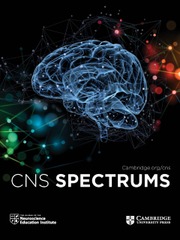The review literature documenting valproic acid associated with anatomical, behavioral, and cognitive teratogenicityReference Valentino, Teopiz and Kwan 1 by-passed a 2022 publication of a series of 108 individuals (85 women and 23 men) suffering complications due to valproate exposure in utero who were parents themselves.Reference Martin, Hill, Bewley, MacLennan and Braillon 2 Among their 187 children, 88 (47%) had neither malformation nor developmental disorders, 43 had malformation(s) (23%), and 82 (44%) had neurodevelopmental disorders.Reference Martin, Hill, Bewley, MacLennan and Braillon 2
This publication, by a patient’s advocate being the mother of two children who were consecutively damaged by valproate, cannot be a surprise. Valproate, a histone deacetylase inhibitor, renders chromatin more transcriptionally active and induces epigenetic changes.Reference Thiagalingam, Cheng, Lee, Mineva, Thiagalingam and Ponte 3 I’m afraid that the concept of translational medicine coined by Cavero in 2007, as the successful migration of preclinical data into predictive models for clinical outcomes, remains an empty concept when the issue is drug safety.
When will there be a concern for adequate information of valproate’s victims about fertility options, antenatal diagnosis, and adequate early surveillance? Of note, the first red flag about valproate, the first of a long series, was published in 1982Reference Robert and Guibaud 4 but no Risk Minimization Measures before the mid 2010s.
Author contribution
Conceptualization, writing, and validation: A.B.
Competing interests
The author declares no conflicts of interest.

